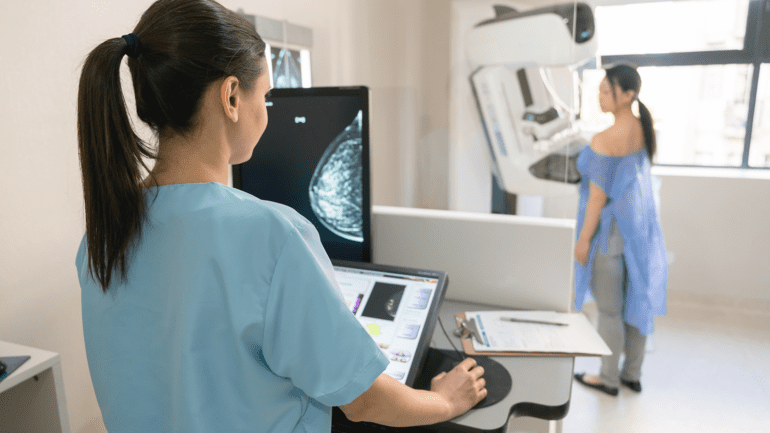TL;DR:
- A mammography-based deep learning model, Marai, successfully detects precancerous changes on mammograms.
- The model shows potential for facilitating earlier breast cancer diagnosis, especially in diverse populations.
- It proves beneficial for women with benign breast disease and BRCA mutations.
- The research included over 6,000 screening mammograms from 2,096 patients over 14 years.
- The model achieves one-year and five-year AUCs of 0.71 and 0.65 for predicting breast cancer.
- Performance is better in women without dense breasts compared to those with increased density.
- The model outperforms traditional BI-RADS categories for longer-term predictions (five-year).
- It identifies early premalignant changes, offering promise for detecting cancers in their earliest stages.
Main AI News:
Cutting-edge technology is revolutionizing breast cancer diagnostics, and recent research in the field of deep learning has brought forth promising results. A groundbreaking mammography-based deep learning model, known as Marai, has demonstrated its ability to detect precancerous changes in mammograms, heralding a potential era of earlier breast cancer diagnosis. This development holds tremendous potential, particularly for a diverse population of women, and could prove instrumental in saving lives.
Published in Radiology: Artificial Intelligence on July 26, a team of experts unveiled their remarkable findings. The study incorporated over 6,000 screening mammograms collected from 2,096 patients over a 14-year span, ensuring comprehensive and robust analysis. The metric of choice to evaluate the model’s performance was the area under the receiver operating characteristic curve (AUC), which proved to be a reliable measure of accuracy.
Notably, the deep learning model demonstrated impressive predictive abilities for breast cancer, with one-year and five-year AUCs reaching 0.71 and 0.65, respectively. This suggests that the model could foresee potential malignancy even years before symptoms become apparent, greatly enhancing the prognosis for at-risk individuals. In comparison to traditional BI-RADS assessment categories, the model outperformed for long-term predictions (five-year), while still maintaining similar one-year predictions.
Furthermore, the model’s effectiveness in identifying subtle changes in imaging was evident, particularly in women without dense breasts, where the AUC reached an impressive 0.72. This finding opens up new avenues for early detection in specific subpopulations, increasing the chances of successful interventions.
Of particular significance is the model’s potential to detect early premalignant changes, indicating its capability in capturing breast cancer in its earliest developmental stages. The ability to identify these precancerous changes could be a game-changer in the medical community, as it enables timely and targeted interventions, potentially preventing the full development of cancer.
Dezheng Huo, the corresponding author of this groundbreaking research and affiliated with the Biological Sciences Division at the University of Chicago, expressed enthusiasm over the results. Huo and the team believe that the model’s performance merits further exploration for breast cancer risk prediction, particularly in high-risk, racially diverse groups. By harnessing the power of deep learning, the medical community may unlock new possibilities in breast cancer diagnostics and treatment.
Conclusion:
The breakthrough of the Marai deep learning model in detecting precancerous changes on mammograms has significant implications for the market. This cutting-edge technology opens up new avenues for early breast cancer diagnosis, potentially leading to improved patient outcomes and reduced healthcare costs. The application of deep learning in breast cancer diagnostics could revolutionize the industry, providing healthcare providers with valuable tools for risk prediction and personalized interventions. Investors and stakeholders should closely monitor developments in this field as it represents a promising opportunity for the healthcare market.

